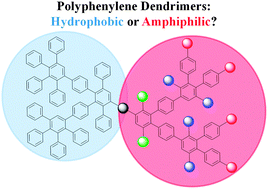The polar side of polyphenylene dendrimers
Abstract
Polyphenylene dendrimers (PPDs) represent a unique class of dendrimers based on their rigid, shape persistent chemical structure. These macromolecules are typically looked at as nonpolar precursors for conjugated systems. Yet over the years there have been synthetic achievements that have produced PPDs with a range of polarities that break the hydrophobic stereotype, and provide dendrimers that can be synthetically tuned to be used in applications such as stable transition metal catalysts, nanocarriers for biological drug delivery, and sensors for volatile organic compounds (VOCs), among many others. This is based on strategies that allow for the modification of PPDs at the core, scaffold, and surface to introduce numerous different groups, such as electrolytes, ions, or other polar species. This review is aimed to demonstrate the versatility of PPDs through their site-specific chemical functionalization to produce robust materials with various polarities.

- This article is part of the themed collection: Dendrimers and Hyperbranched Polymers

 Please wait while we load your content...
Please wait while we load your content...